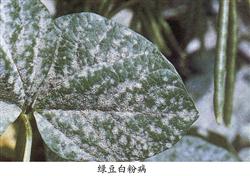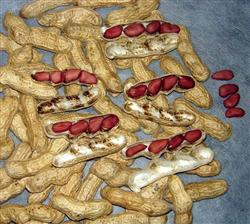How to grow autumn mung beans?

How to grow autumn mung beans? Please guide mung bean with strong adaptability, barren, drought, shade and late sowing. Autumn mung bean production should pay attention to the following techniques: 1. Select good varieties. Autumn mung bean should choose varieties with short growth period, high yield and good quality, and the ripening period should be controlled within 90 days. 2. Broadcast early at the right time. Autumn green beans can be planted before and after the Beginning of Autumn, but the earlier the sowing is, the longer the flowering and podding time is, and the higher the yield is. It is necessary to prepare the soil in time and sow as soon as possible. 3. Reasonable close planting. Mung bean shade tolerance can be interplanted with autumn corn (2349, 8.00,0.34%). Single planting should be strip sowing or on demand. The row spacing is 15ml 17cm × 40mu 50cm, the per mu sowing is 1.5mu 2kg, and the density is 8000mi 10000 plants. The seedlings were fixed in the morning after emergence. 4. Apply more fertilizer. Although mung bean is a legume crop, it is still necessary to apply more fertilizer to achieve high yield of autumn mung bean, and special attention should be paid to topdressing from seedling emergence to flowering stage to promote root nodule formation. Generally, 20 kg of phosphate fertilizer is applied per mu, 12.5 kg of potash fertilizer is used as base fertilizer, and 2.5 kg urea is used as seed fertilizer. Seedling stage, early flowering stage to promote seedling control, flower and pod stage to do a good job of external root fertilizer spraying. 5. Pay attention to the shortage of grass. Grass shortage in mung bean fields is usually serious, so weeds in the fields must be cleared in time combined with mid-tillage and weeding. 6. Prevent diseases and insect pests. Mung bean is more harmful to leaf spot, pod borer and budworm. Leaf spot disease can be sprayed with 50% topiramate 600 murine 800 times solution. The pod borer can be sprayed with 20 ml of 25 ml of water and 50 kg of water at the pod stage with 25% of probiotic emulsion. Or 1.8% avermectin 3000 Mel 4000 times or 40% NNBO 900-1000 times. Aphids can be controlled with 1500 dimethoate EC or 1500-2000 times at a time. 7. Harvest at the right time. Mung bean pods are easy to crack and drop seeds, so one batch of mature harvest should be harvested to reduce the loss. Click to get more mung bean planting technology click to get more grain and oil planting technology
- Prev

How to control mung bean powdery mildew?
How to control mung bean powdery mildew? Please point to mung bean powdery mildew: symptoms: small white powdery spots scattered on the surface of the leaves, when the climate is suitable, the spots expand rapidly, and the diseased leaves are covered with powdery matter, that is, pathogenic hyphae, conidiophores and conidia. After the young pod is damaged, it is deformed and the surface is powdery.
- Next

How to cultivate fresh peanuts
How to identify the advantages and disadvantages of peanut species? Please guide the current peanut preparation period, how to select improved peanut varieties is a matter of great concern to peanut growers. How to identify the advantages and disadvantages of peanut seeds, a few points are briefly introduced: first, look: good peanut seeds have full fruit, sharp embryo top, protruding bud disk and pink seed coat.
Related
- The first cup of black tea in spring, the flavor and history of tea gardens in Kenya, Africa
- The computer can not only choose potatoes, but also grow tea rice. AI will grow winter oolong tea champion.
- It is not only the inflated tea bitten by insects, but also engraved with the four seasons tea in Beipu.
- The Oriental Beauty Tea Festival in Zhuxian County takes the stage at the weekend to experience the plus-size feast of oil tea.
- & quot; Oriental Beauty Tea & Exploration of Emei in Hsinchu, the hometown of quot;
- The new variety of strawberry "Tainong 1" dessert is the first choice with mellow aroma. Crimson gorgeous
- History of Tea in Taiwan: from Wild Inner Mountain to Export Tea Garden
- Two types of Taiwan Oriental Beauty Black Tea won the British three-Star Award for Childhood Tea Xiang Zhang Jiaqi changed from pilot to champion tea maker.
- Banana species and varieties: the planting history of Taiwan Xianren banana and dwarf banana is long, is banana disease resistant?
- Coffee planting Technology: Qianjie Coffee from Seedling to harvesting

